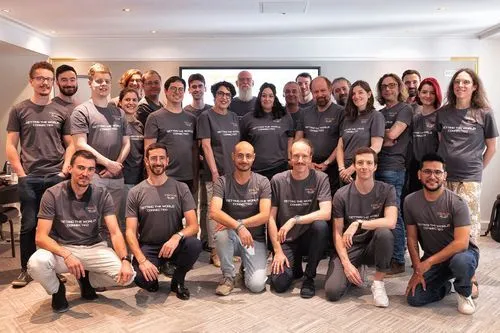"VDI vs RDP: A Practical Decision Framework (Costs, Risks & How To Supercharge RDS With or Without VDI)"
VDI vs RDP,: a practical decision making framework to examine costs, risks & requirements. Discover how to supercharge RDS with or without VDI.
Would you like to see the site in a different language?
RDS TOOLS BLOG
Read about RDS & VDI, their similarities and the benefits brought by RDS-Tools to either set-up.
)
RDS: Remote Desktop Service, and VDI: Virtual Desktop Infrastructure, are the two main choices when it comes to enabling distant working and access to IT networks, devices and applications. Here is a little more about both, their similarities and the benefits brought to either by RDS-Tools in matters of security, monitoring and support provision.
VDI is a cutting-edge technology that utilizes virtual machines to manage and provide virtual desktops. Rather than being confined to a specific physical device, a virtual desktop is a preconfigured image of an operating system and its applications can be accessed from any compatible device.
A VDI is a type of remote desktop virtualization because the virtual desktop is remote to the end user. For example, typically, Microsoft Windows desktops are physical machines with Microsoft Windows installed on them. However, virtualized desktops could have a Linux desktop sitting on a Windows server machine.
Remote Desktop Services (RDS) is a technology that enables users to access applications and desktops on a remote server over a network connection. The primary purpose of RDS is to provide a more efficient solution for delivering applications and desktops remotely.
It allows Windows users to work from anywhere while maintaining a consistent computing environment. Additionally, RDS enhances security by keeping sensitive data in the host servers, reducing the risk of data loss on individual devices.
Virtual desktop infrastructure is a technology that provides individual end users with a full desktop operating system via a dedicated virtual machine (VM). This VM is hosted on a centralized server known as a hypervisor host. When users log onto this server using a remote client device,they’re given access to this virtual OS by means of a discrete connection broker, which is usually running on its own separate server. This cluster of VDI servers can be located in a data center or on-premises.
You can think of a VDI solution as one that mirrors traditional set-ups by equipping each user with their own self-contained desktop environment. So, in other words, different users get desktops that are tailored to different user experiences, with resources and applications that have been specially provisioned for their particular workloads. That allows for a certain level of optimization.
One of the selling points of a VDI environment is that the central server can host multiple operating systems atop its hypervisor layer. For example, there can be one VM for Windows 10, another Windows 11 and yet another for Linux or Mac.
Additionally, VDI desktops can either be persistent or non-persistent. In the former, the end user’s desktop environment continues across sessions, just like any home computer. Non-persistent is when the desktop session (and all its data) is erased after the user logs out. Each time the end user logs in, they’ll be greeted with a fresh desktop with the standard set of apps.
RDS Tools Remote Support enables you to remotely and securely patch, fix and update your RDS infrastructures. Install today to significantly streamline operations.
RDS Tools Advanced Security has been designed by RDS security experts to provide rock solid cyber-protection for your infrastructure. It is consistently updated to anticipate future threats and needs.
RDS Tools Server Monitoring is designed to optimize RDS infrastructures and keep you in front of any potential network issues. Save on costs, prevent down-time and improve effectiveness.
Be it VDI with its individually generated desktops or Remote Desktop Services with its applications and remotely accessible personal devices, both have great advantages. Nevertheless, whichever of these or others you use, network security and surveillance, as well as support provision, are questions guaranteed to raise their head at some level of your day-to-day IT job. Therefore, seize your opportunity to test and buy our multi-tool: up your company’s IT quality and efficiency and begin using, providing and selling your new RDS-Swiss-knife today.
Simple, Robust and Affordable Remote Access Solutions for IT professionals.
The Ultimate Toolbox to better Serve your Microsoft RDS Clients.
 Get in touch
Get in touch
